Since the appearance of DJI Mini 3 Pro, it has attracted countless drone enthusiasts. Everyone is interested in this mini and powerful drone. Many users are concerned about the Mini 3 Pro specifications and aircraft performance, and have done a lot for it. The same type of aircraft evaluation, let's see who is the next competitor?
Many people call DJI Mini 3 Pro the king of thousand dollar drones, especially the image quality, we can also see DJI Mini 3 Pro vs Nano+, DJI Mini 3 Pro VS DJI Mavic Air 2S, DJI Mini 3 Pro vs on Youtube Mini 2 and more.
Now let's discuss the camera specifications of DJI Mini 3 Pro vs Nano+, I believe you will have a detailed understanding of both drones. If you need to buy a mini drone, you will know which one is best for you.
DJI Mini 3 Pro does not have a standard version of DJI Mini 3, it is directly DJI Mini 3 Pro, DJI Mini 2 release date is November 2020, DJI Mini 3 Pro release date is May 2022. As a long-awaited drone, does the DJI Mini 3 stand out?
DJI Mini 2 vs DJI Mini 3 Pro Comparison
 |
|
| DJI Mini 2 | DJI Mini 3 Pro |
| 1/2.3--12MP | 1/1.3--48MP |
| 4K/30fps | 4K/60fps |
| 4x Zoom | 4x Zoom |
| 31 mins | 34 mins |
| 10 km, 720p | 12 km, 1080p |
| No Obstacle Sensing | Tri-Directional Obstacle Sensing |
| No FocusTrack | Focus Track |
| No-Timelapse | Timelapse |
Autel EVO Nano Plus vs DJI Mini 3 Pro Comparison
 |
|
| Autel Nano Plus | DJI Mini 3 Pro |
| 1/1.28--48MP | 1/1.3--48MP |
| 4K/30fps | 4K/60fps |
| 1-16x Zoom | 4x Zoom |
| 28 mins | 34 mins |
| 10 km, 1080p | 12 km, 1080p |
| Tri-Directional Obstacle Sensing | Tri-Directional Obstacle Sensing |
| FocusTrack | Focus Track |
| Timelapse | Timelapse |
1. Drone Images
Imaging is one of the core technologies of drones. Autel EVO series drones maintain consistent high-quality night scene performance. Mini 3 Pro cannot compete with EVO Nano+, and due to DJI's increased aperture setting, the image performance during the day is also unsatisfactory.
①Comparison of light input: The aperture size of Mini 3 Pro is 1.9, and the aperture size of EVO Nano+ is 1.7. Increasing the aperture will effectively increase the light input to a certain extent. At the same time, it will cause the scene to be overexposed, which is too bright or too dark Shooting in a darker scene will magnify exposure shortcomings, such as in bright sunlight or dim lighting at night.
The Autel EVO Plus drone adopts an additional RYYB filter color array design, replacing the green pixel G with two yellow pixels Y, which effectively reduces the problem of light loss during the color filtering process, and the light input is increased by 40%.
At the same time, the EVO Nano+ drone powered by RYYB array technology adheres to the consistent high-quality night scene performance of the EVO series, and still lives up to expectations. The advantages under the same parameters are very obvious. Although the Mini 3 Pro increases the aperture, there is still a big gap.
②Double ISO is actually a waste of money: Mini 3 Pro sacrifices sharpness to improve photo latitude. The basic principle of dual ISO mode is that the same exposure image pulls different gains and then merges into one image, rather than the real long and short exposure to form a picture, the dynamic range effect is not as good as HDR. Taking it as the standard mode, it cannot be turned off, which reduces the resolution, and brings more noise in the evening and night scenes. At the same time, faults are prone to occur in some scenes with gradual brightness changes, such as the evening sun scene.
③Digital zoom range: EVO Nano+ up to 16 times, Mini 3 Pro up to 4 times, EVO Nano+ digital zoom is 1 ~ 16 times, Mini 3 Pro has different value ranges, 4K: 2 times, 2.7K: 3 times, FHD: 4x.
2. Image Transmission System
Autel Skylink 2.0 adopted by EVO Nano+ is the self-developed technology of Autel Robotics professional image transmission team. It is the accumulation of image transmission technology for many years and has been widely praised since its release. For basic aerial photography users, 2.4G, 5.8G, 5.2G image transmission frequency bands, high-quality anti-interference ability, and 2.7k image transmission quality will directly point to a more controllable, less easily lost, and safer unmanned aerial vehicle. machine.
As an example, the Mini 3 Pro claims a 12-kilometer image transmission distance, but from the current performance, the Mini 3 Pro has the risk of losing signal.
3. Future Firmware Updates
1. Follow function EVO Nano+ follow function will be launched in the latest version;
2. Vertical shooting mode EVO Nano+ vertical shooting mode (cropping form) will be launched in the latest version; EVO Lite drone is the first drone that supports lossless vertical shooting.
3. The after-sales service of Autel Sky APP is perfect. The APP self-service repair service is in normal use, and the after-sales online customer service function will be launched in the near future.
In conclusion
Among the thousand-yuan consumer drones, the mini2 is no longer the opponent of the Mini 3 Pro and the Nano Plus. Although it seems that many functions of the Mini3 Pro are attached to the Nano Plus, the Nano Plus is still the most important image function. On the stronger side, you can totally think more about it before buying a drone.








